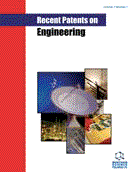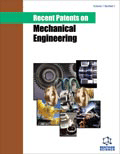Abstract
Background: Breast cancer causes millions of deaths all over the world every year. It has become the most common type of cancer in women. Early detection will help in better prognosis and increase the chance of survival. Automating the classification using Computer-Aided Diagnosis (CAD) systems can make the diagnosis less prone to errors. Multi-class classification and Binary classification of breast cancer is a challenging problem. Convolutional neural network architectures extract specific feature descriptors from images, which cannot represent different types of breast cancer. This leads to false positives in classification, which is undesirable in disease diagnosis.
Methods: The current paper presents an ensemble Convolutional neural network for multi-class classification and Binary classification of breast cancer. The feature descriptors from each network are combined to produce the final classification. In this paper, histopathological images are taken from the publicly available BreakHis dataset and classified into 8 classes.
Results: The proposed ensemble model can perform better when compared to the methods proposed in the literature. The results showed that the proposed model could be a viable approach for breast cancer classification.
Conclusion: In this paper, an approach for multi-class classification on the breast images for cancer detection is proposed. The proposed architecture can be a viable option for the classification of histopathology images.
Keywords: Breast cancer, classification, convolutional neural network, ensemble, transfer learning, histopathological images.
Graphical Abstract
Recent Patents on Engineering
Title:A Study on Multi-class Classification of Breast Cancer Images using Ensemble Network and Transfer Learning
Volume: 15 Issue: 6
Author(s): Lahari Tipirneni*Rizwan Patan
Affiliation:
- Department of Computer Science and Engineering, Velagapudi Ramakrishna Siddhartha Engineering College,Vijayawada,,India
Keywords: Breast cancer, classification, convolutional neural network, ensemble, transfer learning, histopathological images.
Abstract: Background: Breast cancer causes millions of deaths all over the world every year. It has become the most common type of cancer in women. Early detection will help in better prognosis and increase the chance of survival. Automating the classification using Computer-Aided Diagnosis (CAD) systems can make the diagnosis less prone to errors. Multi-class classification and Binary classification of breast cancer is a challenging problem. Convolutional neural network architectures extract specific feature descriptors from images, which cannot represent different types of breast cancer. This leads to false positives in classification, which is undesirable in disease diagnosis.
Methods: The current paper presents an ensemble Convolutional neural network for multi-class classification and Binary classification of breast cancer. The feature descriptors from each network are combined to produce the final classification. In this paper, histopathological images are taken from the publicly available BreakHis dataset and classified into 8 classes.
Results: The proposed ensemble model can perform better when compared to the methods proposed in the literature. The results showed that the proposed model could be a viable approach for breast cancer classification.
Conclusion: In this paper, an approach for multi-class classification on the breast images for cancer detection is proposed. The proposed architecture can be a viable option for the classification of histopathology images.
Export Options
About this article
Cite this article as:
Tipirneni Lahari*, Patan Rizwan , A Study on Multi-class Classification of Breast Cancer Images using Ensemble Network and Transfer Learning, Recent Patents on Engineering 2021; 15 (6) : e201021187748 . https://dx.doi.org/10.2174/1872212114999201109205421
| DOI https://dx.doi.org/10.2174/1872212114999201109205421 |
Print ISSN 1872-2121 |
| Publisher Name Bentham Science Publisher |
Online ISSN 2212-4047 |
 2
2
- Author Guidelines
- Bentham Author Support Services (BASS)
- Graphical Abstracts
- Fabricating and Stating False Information
- Research Misconduct
- Post Publication Discussions and Corrections
- Publishing Ethics and Rectitude
- Increase Visibility of Your Article
- Archiving Policies
- Peer Review Workflow
- Order Your Article Before Print
- Promote Your Article
- Manuscript Transfer Facility
- Editorial Policies
- Allegations from Whistleblowers
- Announcements
Related Articles
-
Recent Advances in Cancer Therapy: An Overview
Current Pharmaceutical Design Platinum Compounds: A Hope for Future Cancer Chemotherapy
Anti-Cancer Agents in Medicinal Chemistry Epigenetic Therapies of Cancer
Current Cancer Therapy Reviews The Role of dUTPase and Uracil-DNA Repair in Cancer Chemotherapy
Current Protein & Peptide Science Stability and Biological Activity of Human Intestinal Trefoil Factor Produced by Pichia pastoris
Protein & Peptide Letters Pharmacological Strategies to Increase the Antitumor Activity of Methylating Agents
Current Medicinal Chemistry Dysregulation of SIRT-1 Signaling in Multiple Sclerosis and Neuroimmune Disorders: A Systematic Review of SIRTUIN Activators as Potential Immunomodulators and their Influences on other Dysfunctions
Endocrine, Metabolic & Immune Disorders - Drug Targets Transition Metal-Based Prodrugs for Anticancer Drug Delivery
Current Medicinal Chemistry Luminescent Silica Nanoparticles for Cancer Diagnosis
Current Medicinal Chemistry Withdrawal Notice: TP53 Targetome: A Database of Novel Breast Cancer Biomarkers
Current Drug Targets Cytokines in the Management of High Risk or Advanced Breast Cancer: An Update and Expectation
Current Cancer Drug Targets Polypharmacology of Approved Anticancer Drugs
Current Drug Targets Point of NO Return for Nitrergic Nerves in Diabetes: A New Insight into Diabetic Complications
Current Pharmaceutical Design Multi-Class Breast Cancer Classification Using Ensemble of Pretrained models and Transfer Learning
Current Medical Imaging Aminopeptidases of Malaria Parasites: New Targets for Chemotherapy
Infectious Disorders - Drug Targets Molecular Mechanisms of Anticancer Effects of Phytoestrogens in Breast Cancer
Current Protein & Peptide Science Metabolism of Flavonoids in Human: A Comprehensive Review
Current Drug Metabolism Role of TGF- β in the Tumor Stroma
Current Cancer Drug Targets PCL/PEG Copolymeric Nanoparticles: Potential Nanoplatforms for Anticancer Agent Delivery
Current Drug Targets Cytochromes P450 in the Bioactivation of Chemicals
Current Topics in Medicinal Chemistry





















